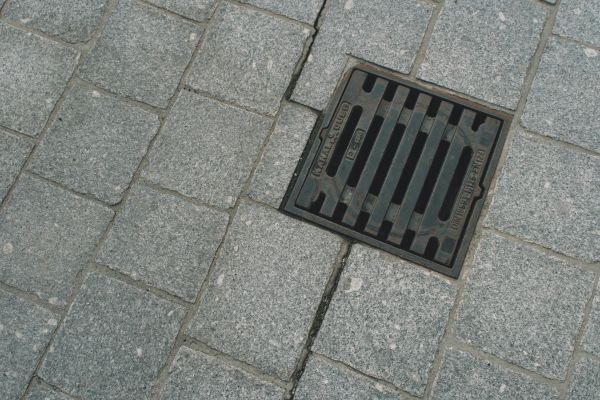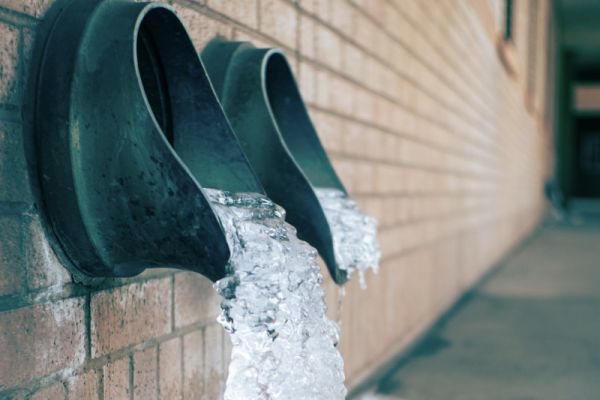In this article
How to Fix a Broken Drainpipe
Noticed a broken drainpipe? Don’t just hope for the best and turn a blind eye. If left untreated, a broken drainpipe can seriously damage your property. What starts off as a small fissure or crack can soon turn into a fully burst pipe, flooding your home and garden with foul-smelling water riddled with disease. Broken pipes can also lead to mould, wet patches and sinkholes – all things you want to avoid for the sake of your home and your health. As such, it’s important to act at the first sign of damage.
If you’re wondering how to fix a broken drainpipe, you’ve come to the right place. This blog outlines the options available to you for broken drain repair.
Option one: do it yourself
Confident that you can locate the damage yourself? If so, you may want to try a DIY solution. The following steps should help:
- Look for any external signs of breakage, such as unpleasant smells and pooling.
- Once you’ve found the damage, start digging. You’ll want to make a hole at least six inches deeper than the crack or fissure to make sure you have enough room to work.
- You’ll then need to cut your new section of pipe. It’s important to use the right tools for safety and make sure that the length and diameter of the pipe is correct.
- Attach the new piece of pipe to your existing system using flexible rubber couplings.
- Refill the hole to ensure your repaired drainpipe is adequately supported.
As always, if you’re unsure, it’s better to call in the experts. Never attempt to fix a broken drain yourself if you’re not 100% confident in what you’re doing, as a job badly done can lead to further costly damage down the line.
Trenchless technologies vs full excavation
Trenchless solutions don’t require a lot of digging. In contrast, full excavation can be messy and may require us to dig up your garden. The type of solution necessary will depend on the extent of the damage, which is why we’ll always assess the situation with CCTV before taking action. As experts in broken drain repair, here are the top solutions we’ll likely recommend:
Patch lining
Patch lining is a quick and effective solution for pipes that are only damaged in a couple of places. We won’t have to dig up your garden. Once we have identified the damage with CCTV, we’ll insert an inflatable tube and patch liner into the pipe. We’ll then inflate the tube, causing the patch to stick to the damaged section of pipe. We’ll wait for the resin on the patch liner to set before removing the inflatable tube, leaving you with fully repaired drains.
Slip lining
Slip lining is the process of inserting rigid tubes into cracked or damaged pipes to improve structural integrity and prevent leaks. It can be done with one continuous piece of tubing or with several segments of tubing, which are inserted separately. These tubes are often made of fibreglass or high-density polyethylene, providing a durable solution.
Cured-in-place lining
Similar to patch lining, cured-in-place lining involves inserting a tubular lining saturated with resin into your broken drain. We’ll then use an inflatable device to expand the lining inside the pipe, activating the resin on it with water or UV light. Once the lining has cured, we’ll remove the inflatable device, leaving your pipes fully repaired.
Full excavation and replacement
When it’s not possible to remedy the problem in other ways, full excavation and replacement is the only way forward. While this may seem costly in the short term, it will save you a lot of money in the long run, particularly if your home still runs on an old metal drainage system. At Cotswold Drainage, we always try to keep disruption to a minimum, working quickly to get your home and garden back to normal as soon as we can.
Experts in broken drain repair
Unfortunately, damaged pipes aren’t always apparent. While you’re likely to notice blocked drainpipes or large, external cracks, other types of damage can easily go unnoticed. For instance, when it comes to underground pipes, it’s often a case of “out of sight, out of mind”. The galvanised coating on the inside of metal drainpipes is also prone to corrosion damage, resulting in serious problems later down the line. Regular health checks are therefore recommended, with CCTV drain surveys providing a cost-effective method for keeping potential issues at bay.
Need your drains repaired? Contact our expert team today.
Get in touch
Contact our friendly and professional team via form, phone or email for any drainage issues you may have.
From blocked drains to septic tank repairs and replacements, we're here to help. We have over 25 years of experience and offer 24/7 emergency callouts.
-
01386 882324
-
WhatsApp
-
This email address is being protected from spambots. You need JavaScript enabled to view it. -
See what our customers think


